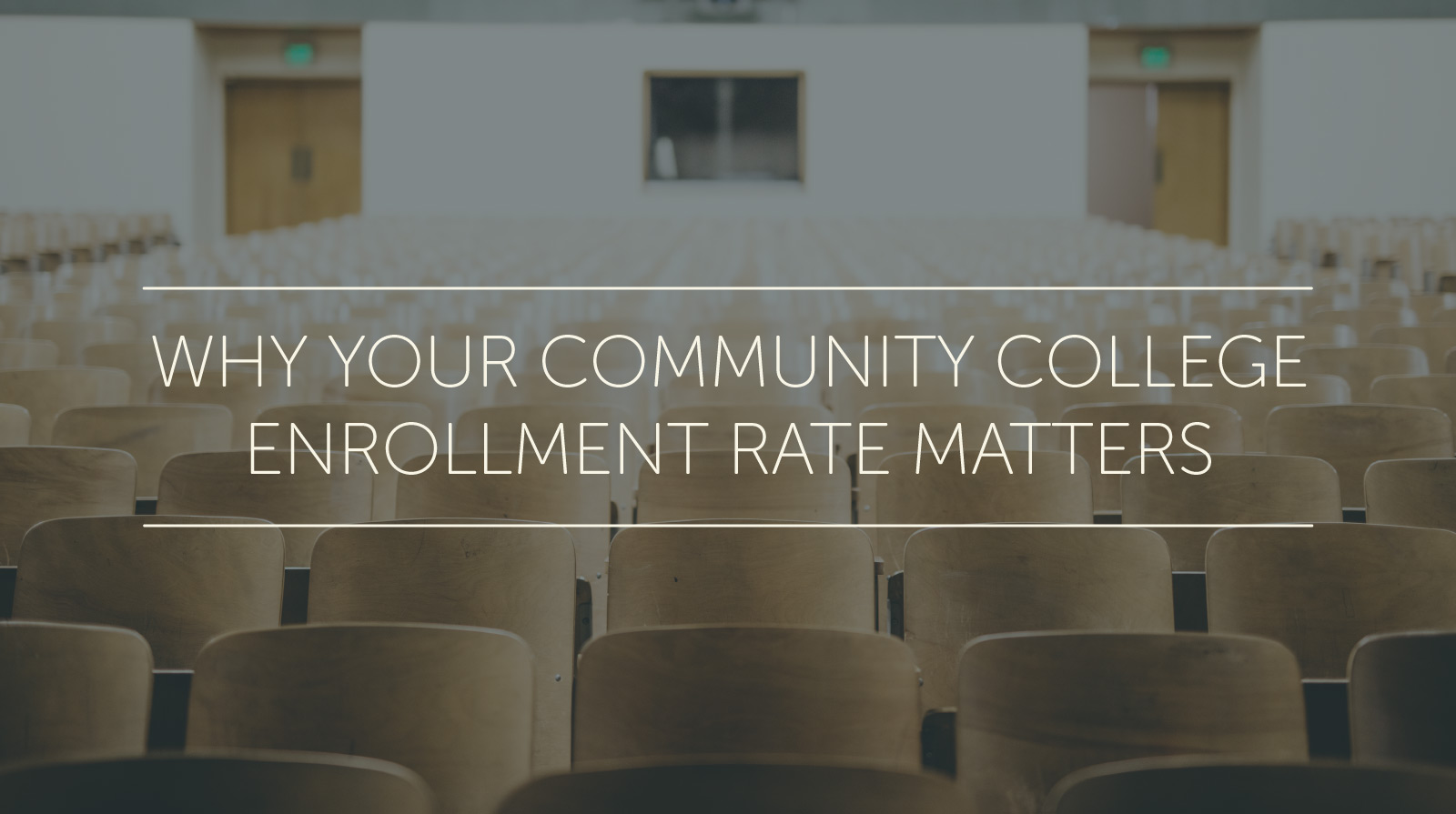Higher enrollment leads to higher revenue, and more funds to devote to the college.
Budgets are tight these days. States have cut funding to many community colleges, and many college leaders have responded by lobbying for more government support. The hope is that, by addressing the state governor and legislature directly, schools can win the grants they need to keep their doors open.
However, when this funding fails to materialize, schools are left with a touch choice. Community colleges need a way to replace state funding to bolster their revenue stream. If they can’t, then the alternative is to find ways to balance their budget by cutting operating costs.
Unfortunately, this often sets community colleges on a self-perpetuating downward spiral. When community colleges cut programs, reduce staff, and decrease class offerings, their student enrollment rate drops. And when enrollment rates go down, it leaves colleges with even fewer resources to devote to programs.
The best remedy community colleges have for low funding lies in drawing in more students. A community college that can increase a class size from twenty students to twenty-five can bring in extra income from tuition with next to no additional overhead. But reaching a wider range of potential students and convincing them to come back to school has proven a challenge for many institutions.
Making the case for community college, even in a strong economy.
Of course, part of why community colleges have been struggling with enrollment lately is a result of the strong economy. When the job market is good, many community college candidates choose to go to work rather than school. Either that, or they only enroll part-time. It’s only when the economy goes downhill that learners turn to community colleges for the additional training they need to transition to a more employable field.
However, there are many reasons prospective learners should still consider full-time enrollment at community college—even when there are job prospects available.
For one, a two-year degree or post-secondary certification will help a graduate retain a job when a recession hits, and will give them an edge should they find themselves competing for a position in a struggling economy.
Furthermore, individuals with a 2-year degree earn an average annual salary of $41,496 compared to those with just a high school diploma, who earn on average $35,256 a year. Meanwhile, the unemployment rate for individuals with a high school diploma is 5.4% compared to 3.8% for those with an associate’s degree.
Of course, employment and job prospects vary by individual professions and by local economic factors. This is why it is so important to educate prospective students about the best education options at your university. Providing them with relevant, timely information about which programs can best help their future job prospects is the best way to encourage a hesitant student to enroll.
How to reach—and educate—potential students.
Building community college enrollment relies on public awareness of the advantages an education at a post-secondary institution can provide. Unfortunately, the education campaign this requires is often beyond what many community colleges can manage on their own, both in terms of financial resources, and the time such initiatives demand from an already-burdened marketing department.
Fortunately, we developed a solution that aids community colleges of any size in educating prospective learners about the value of a community college education. We help grow the community college enrollment rate through high-quality articles and marketing resources, which we provide to colleges in an easy-to-share format that they can edit to fit their unique needs.
If you’ve ever heard of content marketing, this method may sound familiar to you. The concept is straightforward, and has been used successfully by businesses and educational institutions for years. The goal is to help consumers make informed decisions by establishing yourself as a trusted resource.
Rather than wait for a prospective student to search for reasons to enroll on their own, you can provide all the information they need in one place, including the courses they can take, the timeline for taking the course, the benefits education can bring them in terms of career prospects, and a forecast of the job market for graduates and certificate holders.
That may sound like a lot of work, but we’ve done most of it for you. Our service provides a library of highly-researched content regarding the value of various community college programs. By accessing our content archive, you can select articles that suit your program offerings, and then use our tools to distribute them via social media, email, print, and even a micro website.
You gain marketing resources for students, and together we change public opinion about community colleges through education.
Community colleges cannot afford to lose enrollment.
Building—and maintaining—enrollment is never easy. But strong enrollment is a community college’s best defense against funding cuts, and the only long-term way to keep programs running. Furthermore, high enrollment is a compelling argument to bring before state legislators to convince them of the viability of a community college’s program, and to make the case for more grants.
Setting aside extra funds for a marketing initiative when the budget is already tight may seem extravagant. But without a marketing push, enrollment will continue to fall, and the situation will only grow worse.
Moreover, the content marketing resources provided by ApertureCM provide a more affordable—and effective—means of reaching a broad audience. By combining resources, community colleges can work together to raise awareness of the positive impact they have on their communities, increase student enrollment, and demonstrate their value to legislators.


